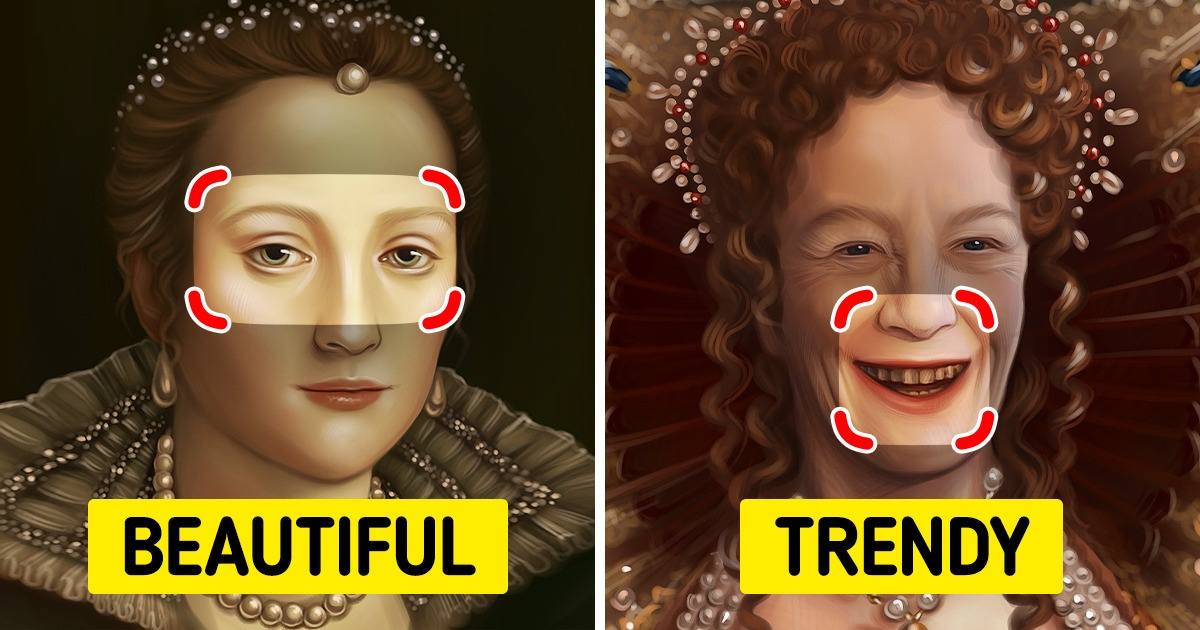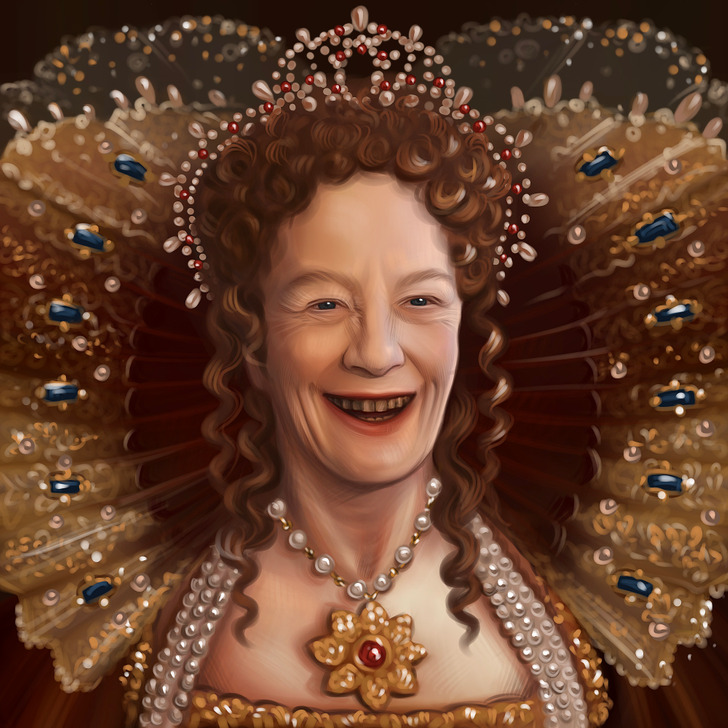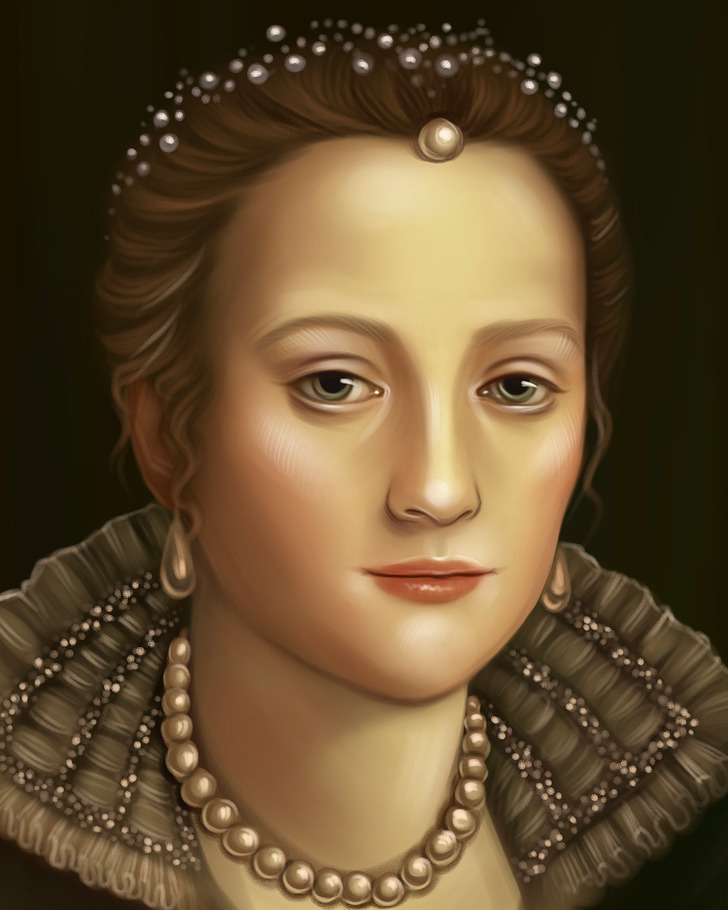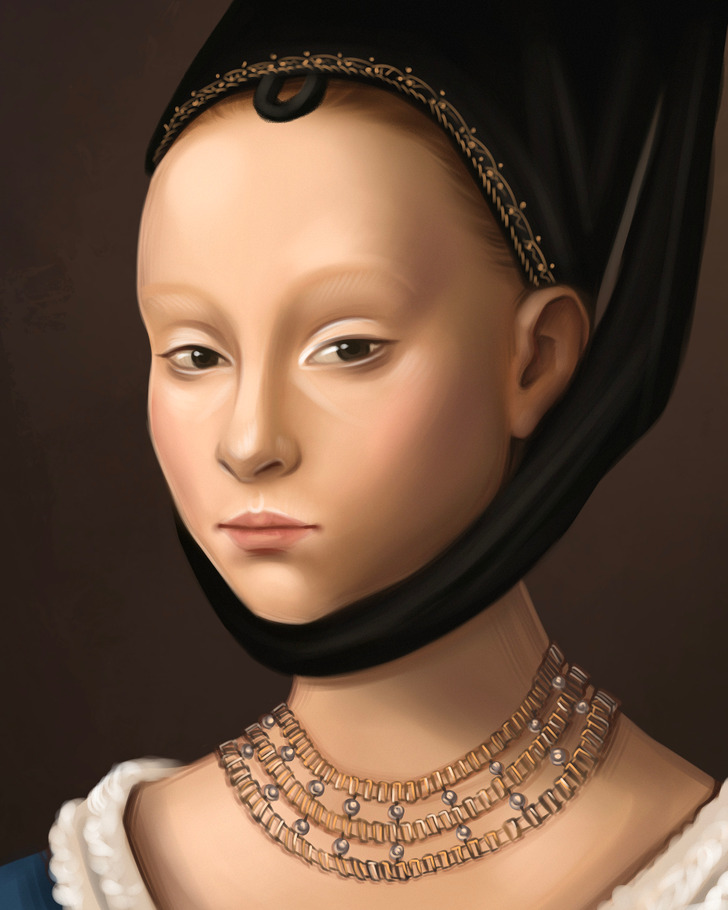What Tricks Women of Different Epochs Used for the Sake of Beauty

History shows that the phrase, “Beauty requires sacrifice,” had a literal meaning in the past. Fashionistas would use various tricks for the sake of beauty — they removed hair from their head, made masks from unpleasant ingredients, whitened their skin, and blackened their teeth. All in all, they used products that might seem absolutely insane today.
5-Minute Crafts is telling you what things women of the past did for the sake of beauty.
Intentional deformation of the skull

Skull deformation was quite widespread in the fourth and fifth centuries and remained popular for a long time. An elongated head, shaped like an egg, was considered the ideal of beauty.
The manipulations of the skull were done on kids at an early age since their bones hadn’t become too strong yet. To give the head the necessary shape, people used cloth bandages with pieces of wood tied to them.
Although there is no confirmed evidence of the harm of such manipulations, the fashion for egg-shaped heads seems rather strange nowadays.
Poisonous hair dyes
Hair dyes that were popular among fashionistas of those times contained poisonous components for a long time.
From the fourteenth to the sixteenth century, women obtained a reddish hue by rubbing their hair with a solution of rock alum, black sulfur, and honey, drying it in the sun afterward. The components of the dyes were toxic oxide of lead, which can adversely affect the functioning of the lungs and both the nervous and reproductive systems, along with toxic iron chloride.
Unsafe whitening

During the reign of Elizabeth I, the queen was considered the standard of beauty, and all the big fashionistas tried to be like her. In order to give the face a noble pale color, girls would use a special “whitening foundation,” consisting of vinegar and lead whitener. For whitening freckles and pigment spots, they used decoctions, which included turpentine, sulfur, and mercury. After such procedures, the skin would get covered with wrinkles and turn a gray hue. But the inventive fashionistas kept on using these toxic products, making their faces look smooth by applying raw egg whites to them.
Skin “cleansers” with dubious ingredients
Skin without freckles, moles, and age spots was not only considered beautiful in the Middle Ages, but it was also key to a girl’s purity. Birthmarks and other visible skin imperfections could be perceived by others as a mark of the devil, while the girl herself could be declared a witch. It’s no surprise that in order to get rid of such “tags,” people would use various, sometimes unconventional, methods.
Concoctions plants, donkey milk, and even horse dung were used as ingredients in special skin brighteners.
Lipstick from cinnabar

Just like any mercury compound, cinnabar is toxic. However, the beauties of the Elizabethan era were not sad about this fact, even if they were aware of it. This substance remained the most popular “lipstick” for a long time, and girls used it to make their lips look bright red.
By the way, the devotion of some fans of Queen Elizabeth I knew no bounds. After the teeth of the Queen started to go bad, one after another, some women started to blacken their teeth on purpose to look like the queen.
The mask of youth from crocodile dung
Mud masks, which were based on crocodile dung, were extremely popular in Ancient Rome. It was believed that such tricks extended the youth of the skin.
Also, ground oyster shells, animal horns, bile, placenta, bird fat, and more were used as beauty ingredients.
Tight corsets

It is believed that the trend of tight corsets with whalebone appeared in the sixteenth century thanks to Catherine de Medici. The trend reached its peak in the Victorian era. In pursuit of a thin waist, girls would tighten it, sacrificing their health greatly. Ribs and inner organs often would get damaged due to this “beauty” trend.
Gladiator sweat for improving skin color
Women in Ancient Rome believed that men’s sweat affected their skin color positively. During gladiator fights, gladiators’ sweat and animal fat were collected and then sold as cosmetics, promising buyers an even skin tone.
Tear drops from belladonna juice

Eye makeup wasn’t that popular in the past, while colorful contact lenses had not been invented yet — that’s why the women of those times had their own ways to improve the way their eyes looked. Drops from belladonna juice were a popular product for the beauty of the eyes, as they enlarged the pupils and made the eyes look bigger. However, worsening eyesight was a side effect of this. When used for a long time, these drops could even provoke blindness. Nevertheless, it didn’t stop the fashionistas of that time from using the drops.
Radioactive cosmetics
At the beginning of the twentieth century, when people didn’t yet realize the full danger of radioactive elements, Tho Radia products, which included thorium chloride and radium bromide, appeared on the cosmetics market. Manufacturers promised women that the product would help tone the skin, improve subcutaneous circulation, and get rid of wrinkles. However, in fact, such products only caused irreparable harm to women’s health.
Plucking out hair on the head

During the Renaissance, the absence of body hair was especially fashionable. Eyebrows, eyelashes, and hair that covered the forehead too much were considered unnecessary and unwanted. Therefore, the hairline was carefully plucked by women to make the forehead appear more open and high.